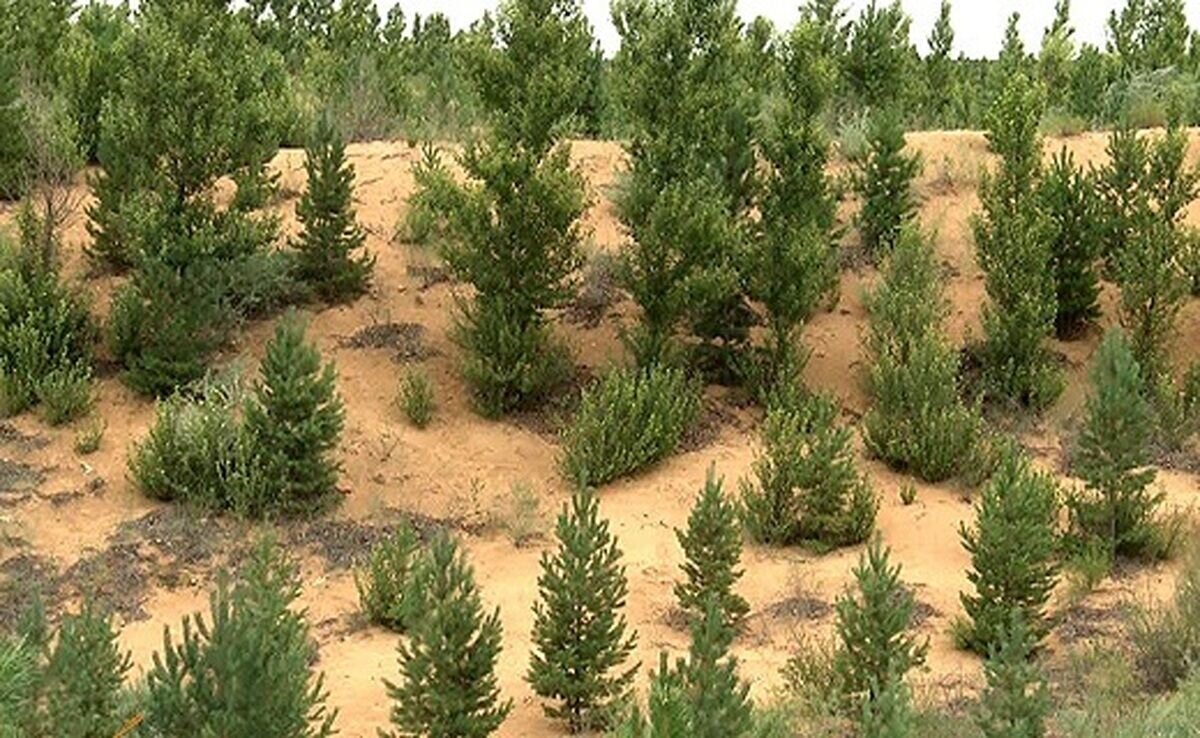Desert greening on agenda to deal with drought

TEHRAN - Iran is located in an arid and semi-arid belt and has been suffering from drought and low rainfall in recent years.
In proportion to the country’s land area, the area of forests and green spaces are very small, and many of them have been already destroyed.
Considering that Iran is one of the countries with low vegetation and only seven percent of its total area is covered with forests, the need to increase the country's green space is very important.
There are two types of forests in the country's deserts, which include desert forests and man-planted forests, and the Natural Resources Organization plans to plant up to 40 million saplings in these areas.
Man-planted forests of desert areas are a part of the forests of this climate that does not have a natural origin and were created with the aim of stabilizing sinking sands and developing vegetation in desert lands through planting, cuttings, sowing, and seeding.
The main purpose of desertification activities such as planting trees, building windbreaks, seeding, etc., is primarily to strengthen the vegetation of the area as the main factor in preventing wind erosion, protecting the soil, and preventing damage caused by the movement of quicksand.
Creating an ecological balance in transforming desert lands into an area capable of sustainable economic and social development of the region is considered one of the secondary goals.
One of the very important reasons for increasing the country's vegetation is that Iran is the seventh carbon-producing country in the world and in terms of carbon absorption, Iran has a very low rank.
Due to the importance of the per capita increase in Iran's green spaces, a campaign titled "Green Iran, Strong Iran" and a national program for planting one billion saplings over the course of four years were launched.
Experts say tree planting is a climate change solution that doesn’t require scientists to come up with technological solutions to draw carbon dioxide out of the atmosphere. It is available now. It is the cheapest one possible and every one of us can get involved.
The national budget bill for the current Iranian calendar year (March 2023-March 2024) has allocated a special line of credit for planting trees.
These credits are used for tree planting and annual maintenance, ILNA quoted Abbas-Ali Nobakht, head of the Forests, Rangelands, and Watershed Management Organization, as saying.
Leader of the Islamic Revolution Ayatollah Ali Khamenei has said: “If each Iranian plants three saplings, the government's goal to plant one billion saplings over the next four years will be realized.”
Over the past years, the environment has been damaged by various natural and human factors, and the main priority in planting one billion trees is to restore nature, Nobakht said.
On March 6 which marked National Tree Planting Day, Ayatollah Khamenei pointed to the importance of planting saplings in preserving the environment, emphasizing that with the help of the people, it is possible to plant one billion saplings.
The destruction of forests and the environment and vegetation is equivalent to the degradation of national interests, and the depletion of part of the forests for construction, except in emergencies, is definitely to the detriment of the nation, he explained.
The Leader further called on people to plant and protect trees, saying that doing such important work requires national support. Tree planting is among the activities that can prevent the disappearance of forests around and inside cities through expanding vegetation cover.
Leave a Comment